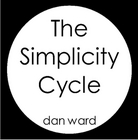Next Frontiers For Design: New Economic and Cultural Models
In The next frontiers for Design and User Experience Jess McMullin offers:
I believe that the opportunity for design and user experience to increase our influence is not about finding better methods for working with users, but in better methods for working with business. Not that new methods for generating insight, prototyping, and defining solutions aren’t useful. But that’s not where the real barriers are in my practice. The real barriers are about building consensus, buy-in, bridging competing viewpoints, and actually executing. In that environment, we need to cultivate business fluency, and use our design toolkit to work with stakeholders, not just customers.
This a solid assessment of the obstacles design and user experience face, and sound advice on how to increase the influence our discipline commands. Thinking pragmatically, the business has power and money, making it essential for design to “cultivate business fluency”.
It’s important to build on this sound advice, and understand that to be well-positioned for the long term, design and user experience must recognize that new economic and cultural production models – commons-based, open source, networked / collaborative, and likely others yet to be seen – blur the formerly sharp distinctions between businesses and users / customers, and consequently open new roles and channels of influence for design.
This blurring is most visible in sectors of the economy such as software and media, but is also happening in other sectors as well, and even for services traditionally seen as the responsibility of the producer. The balance of power is changing. Though far from outright demolition, the old high ramparts dividing production processes from consumption are showing some wear.
This blurring (convergence might be a better (albeit overused…) word) means business also has clear and increasing incentive to cultivate design fluency. User experience, and other disciplines oriented toward understanding and working with – even working for – users and customers are essential for survival and success in these new economic and cultural production models.
One outcome of this convergence of methods, frames, and approaches might be, as Janko Roettgers suggests, using a combination of business and design perspectives to prototype a business, instead of just the products and experiences that are traditionally seen as the touch points or interfaces connecting businesses with customers.
To close the loop, design and user experience should indeed cultivate business fluency, but also keep in mind that those things which make design different from business – such as core approaches, frames, and methods – will remain critical to insuring the value of user experience in the future. Good examples of these differences, as Peter Morville recently suggested, are the holistic perspectives and techniques that help design and user experience imagine and describe the future.
What could be more influential than defining the future?
Finally, what does this future look like? Open design may be an early example of a new model and approach to economic and cultural production, one that was both conceived with the aid of, and also structured to rely upon, design and user experience perspectives.


